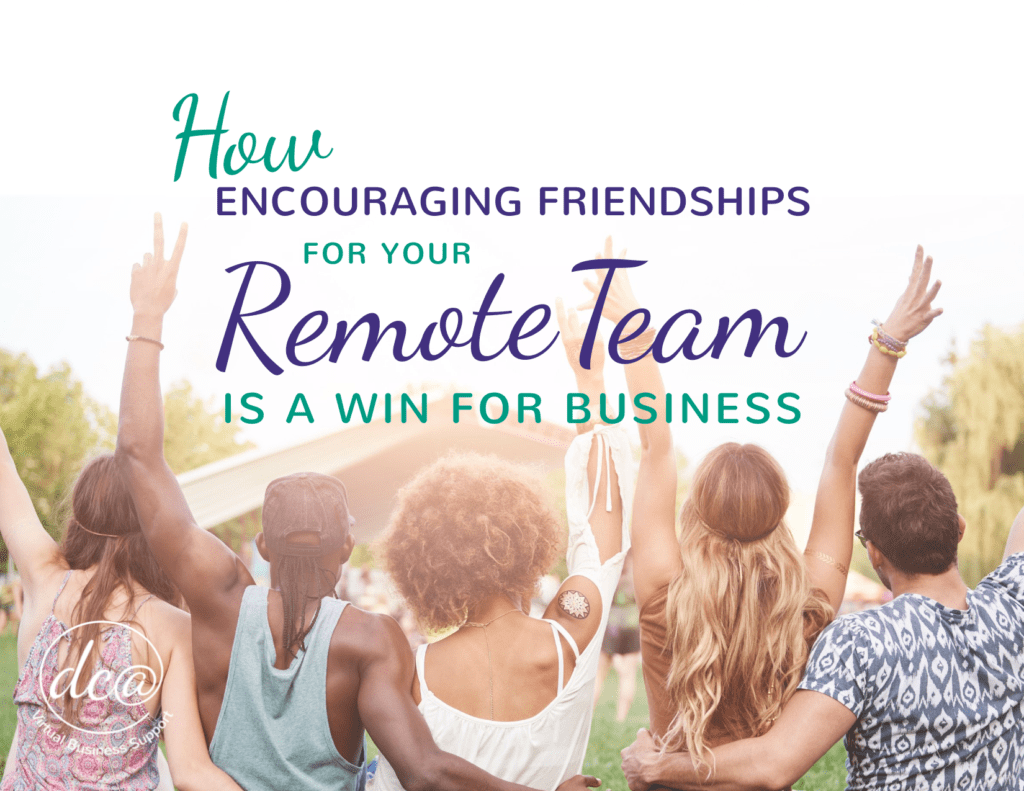
How Encouraging Friendships for Your Remote Team is a Win for Businesses
Business Benefits
There are many benefits to having a friend at work as Gallup discovered in their employee engagement survey. They found that when people have a best friend at work, it leads to better job performance. It can also mean fewer safety incidents, more engaged customers, and a higher profit. If employees have a sense of affiliation with their team members it can translate to them taking actions that help the business when they might not have otherwise. What does this mean for remote employees though? It means that employee engagement should still be encouraged! Through open communication and collaboration, encouraging them to get to know each other, and promoting social activities into those Zoom meetings we all attend. Even if it means having them share what they ate for breakfast that morning.
Before Remote was Popular
Some of us who have come from a traditional office setting; friendships began at the water cooler. So much so, that this has turned into a joke that is referenced in many TV shows, memes, and culture. When the pandemic hit in 2020 and shifted many companies to a virtual environment, it removed the proverbial water cooler. Some have called it the death of the office friendship, but here at DCA Virtual Business Support, we don’t see it that way.
In August of 2021 DCA Virtual posted a blog about the Benefits and Challenges of Work from Home Employees. This listed benefits for a company to have virtual employees, but what about the benefits of friendship between your virtual employees? How do your employees make friends at work if they never meet them? DCA Virtual has been remote since it started in 2011 and our Virtual Assistants and Creative Assistants aren’t rookies when it comes to working remotely, they excel at it! Many have created long term friendships.
“You have to learn to work with each other and discover commonalities.”
Speaking with a long-time Virtual Assistant and Team Leader about making friendships remotely she said, “Some of my closest friends are here. It really starts with making connections. When you work together on projects or have meetings together, you have to learn to work with each other and discover commonalities.” This shines a light on the fact that you don’t have to be standing next to a person to communicate. While speaking with our Web Tech for research on this topic, we found that we had things in common as well and started up a conversation. This is the beginning of a friendship.
The Time it Takes
The building blocks for making a friendship are time and effort. According to Jeffrey Hall, a University of Kansas professor, who published a study in 2018 about time and friendship. He came to the conclusion that on average it takes 30 hours for someone to become a casual friend. Add in another 20 hours for someone to become a friend. Another 90 hours, or about 2 working weeks, for someone to become a good friend. If you spend an additional 210 hours, almost a month, for a total of 300 and you’ve found yourself a best friend. They end up spending more time with their co-workers than they do with most people. It makes sense that friendship begins at the workplace, or even in college classes and dormitories.
Encourage the Environment
Working remotely removes the spontaneous lunch or post-work drink from the equation of friendship. So, how do you make that happen remotely? You encourage socialization! Spontaneous conversation can happen naturally if you encourage an environment that it can grow in. With our Creative Project Manager, she found a friend when the topic of wine emerged in some small talk during a call. A conversation took place, and a friendship began. But many remote employees are strictly monitored on their work platforms for productivity. According to Vice.com many have purchased mouse-movers to keep their computer active while they are busy reading a document, going to the bathroom, or fetching a glass of water. So, if you want your remote employees to build friendships? Relax. Encourage conversations that aren’t work-related on Zoom chat, Microsoft Teams and Slack. Encourage people to stick around after the meeting has ended to have a little fun. When Zoom meetings end 20 minutes early there is a domino effect of people clicking that “end call” button. They don’t stick around, while before if they met in the office, they stuck around and chatted. Which is how they get to know each other and talk about their lives.
If remote employees, such as the Virtual and Creative Assistants you find at DCA Virtual, make the effort to ask their colleagues random questions or blurt out something they like. They might find that someone else also likes it, and there are the building blocks to friendship.
We’d love to connect with you to hear your thoughts on how you encourage your employees to build friendships in the remote space. We may even feature you in a blog.
